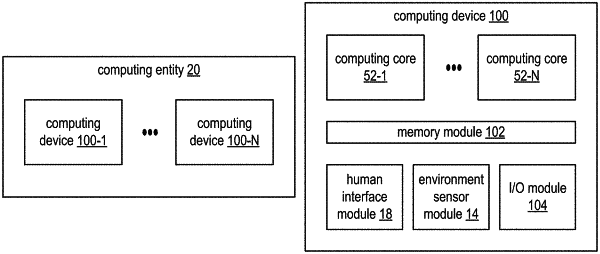| CPC G09B 5/12 (2013.01) [G06F 16/2272 (2019.01); G06F 40/166 (2020.01); G09B 5/02 (2013.01); G09B 5/08 (2013.01); G09B 7/00 (2013.01)] | 12 Claims |

|
1. A computer-implemented method of using a computing system, the method comprises:
generating, by a computing entity of the computing system, a combination of a multi-dimensional representation of a real-world environment and an augmented reality overlay to produce a virtual reality environment, wherein the generating includes:
detecting, by the computing entity, an illustrative asset that is common to a first set of assets and a second set of assets for the augmented reality overlay and to a real-world object of the real-world environment, wherein the first set of assets represents a first learning object that includes a first set of bullet-points for a first piece of information regarding a topic, wherein the second set of assets represents a second learning object that includes a second set of bullet-points for a second piece of information regarding the topic;
rendering, by the computing entity, a three-dimensional (3-D) model of the illustrative asset and a three-dimensional (3-D) model of the first set of assets with regards to the first set of knowledge bullet-points to transform the first set of knowledge bullet-points into 3-D frames of a first descriptive asset, wherein the first descriptive asset represents the first learning object;
rendering, by the computing entity, a three-dimensional (3-D) model of the illustrative asset and a three-dimensional (3-D) model of the first set of assets with regards to a first set of knowledge test-points for the first learning object regarding the topic based on the first set of knowledge bullet-points to transform the first set of knowledge test-points into 3-D frames of a first knowledge assessment asset;
rendering, by the computing entity, the three-dimensional (3-D) model of the illustrative asset and a three-dimensional (3-D) model of the second set of assets with regards to the second set of knowledge bullet-points to transform the second set of knowledge bullet-points into 3-D frames of a second descriptive asset, wherein the second descriptive asset represents the second learning object; and
rendering, by the computing entity, the three-dimensional (3-D) model of the illustrative asset and the three-dimensional (3-D) model of the second set of assets with regards to a second set of knowledge test-points for the second learning object regarding the topic based on the second set of knowledge bullet-points to transform the second set of knowledge test-points into 3-D frames of a second knowledge assessment asset.
|